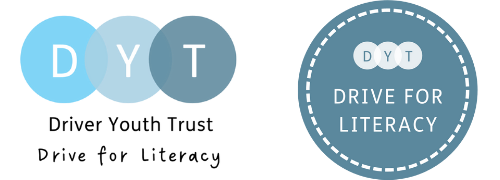Systems for screening learners for literacy difficulties in Secondary School – are they effective? Part 2 – Assessment & Screening
27/11/2017
At a time when a majority of secondary schools have converted to academy status (61% in May 2016, according to the BBC), meaning they no longer have free access to Local Authority services, the identification of SEND is ever more complex. Schools are left with the choice of paying large sums to hire a specialist assessor[1] to diagnose specific difficulties or make use of in-school assessments to identify need. Previously I discussed schools’ approaches to identification, the second part of my blog series will now assess the effectiveness of the systems in place and how they influence our conception of literacy difficulties in learners.
Where does screening fit in?
Screening tools can provide the much needed bridge between identification that a learner needs additional support and targeted provision being implemented. Knowing a learner has a standard score in reading of 76 (classified as below average but confidence intervals should also be taken into account), does not tell you what type of intervention may be successful in accelerating reading progress. However, accessing a more detailed assessment is one way of developing this.
Screening tools suitable for secondary school pupils include:
- GL assessment – Dyslexia Screener and Lucid Rapid
- Nessy – Dyslexia Quest (11-16)
- Do-IT profiler – Dyslexia+ Student Profiler
- Hidden Disability Questionnaire
A word of caution though – screening tools are just that – they screen for a condition but they do not provide a diagnosis. A positive result means it is possible that a learner may have the condition. And equally there can be false negatives too.
Crucially though, what use is a diagnosis? A full diagnostic report from a specialist assessor or Educational Psychologist will include recommendations that can be useful, but as described below, this is costly. A label on its own will not assist a secondary school in supporting that young person.
The Do-IT profiler and Hidden Disability Questionnaire largely consist of questions that are likely to elicit whether dyslexia is likely.
However, the Nessy and GL Assessment tools provide some very useful information about learners’ strengths and difficulties. The Nessy screener includes assessment on visual word memory, auditory sequential memory, visual sequential memory, processing speed, phonological awareness and working memory (assessments designed to evaluate the ‘characteristic features of dyslexia’ in the Rose definition). The GL Assessment includes ability tests of general problem solving skills including vocabulary and spotting patterns, diagnostic tests that assess processing of word sounds and perceptual speed and attainment tests that assess reading and spelling.
Both of these assessments provide reports about a learners’ relative skills in each area. This can then be used to consider interventions and recommendations for classroom practice. However, where these assessments are administered via computer, it can be very difficult to unpick the exact difficulties a learner may be having.
Therefore, I would say that although screening results can be useful, nothing compares to an in-depth analysis of a learner’s skills by an experienced teacher, TA or SENCo. We include some free tools for this in our DfL toolkit, see for example analysing spelling need.
Another of my preferred tools is the GL Dyslexia Portfolio – this assessment does not provide results regarding severity of dyslexia, instead it can be used to provide a detailed picture of a student’s strengths and difficulties. I would recommend using this sort of tool following an initial assessment, when interventions in place do not have the intended impact as it takes approximately 45 minutes to administer 1:1.
Final Words
Screening tools are great for time-poor SENCos who would like a way of gathering and utilising more detailed information about a learner. This will be in order to provide recommendations to colleagues regarding strategies that are likely to help in the classroom and developing an intervention plan.
However, if there is staff expertise and time to provide more in-depth analyses about learners’ strengths and difficulties, I would always opt for this.
References
http://www.bbc.co.uk/news/education-13274090
https://www.nessy.com/uk/product/dyslexia-screening/
https://www.gl-assessment.co.uk/media/182327/dyslexia-dyscalculia-guide-2017-ip.pdf
DfE/DoH (2015) Special educational needs and disability code of practice: 0 to 25 years, DfE, London
NASEN (2014) SEN Support and the Graduated Approach, NASEN, Staffordshire
Ofsted (2017) School inspection handbook, Ofsted, Manchester
Patoss (2010) Specific Learning Difficulties, Patoss Ltd, Worcestershire
Snowling, M. (2005) ‘Specific Learning Difficulties’, Psychiatry, 4(9), pp.110-113
See Senior Consultant, Jules Daulby’s article for TES on a SENCo’s toolkit.
[1] A quick search on the internet shows that specialist assessors seem to be charging between £350 and £500 for one full diagnostic assessment. As it is thought that approximately 10% of the population may be dyslexic (although be aware this remains a point of contention) and the average size of a secondary school is around 1000 pupils according to government figures we would be talking in the region of £40,000 to get all of the students in one school assessed!
